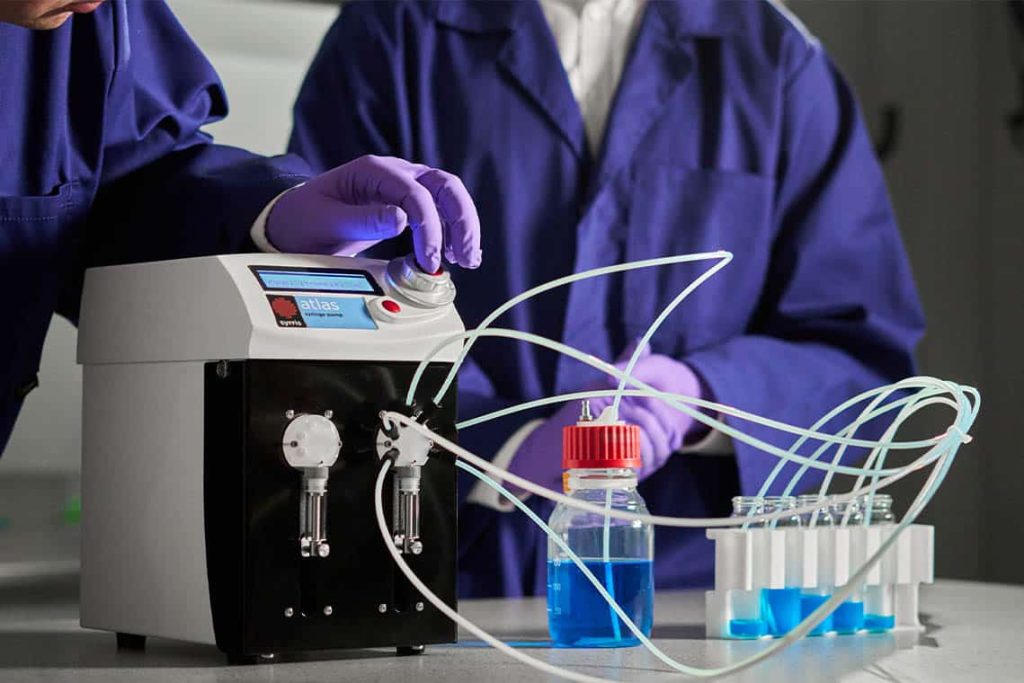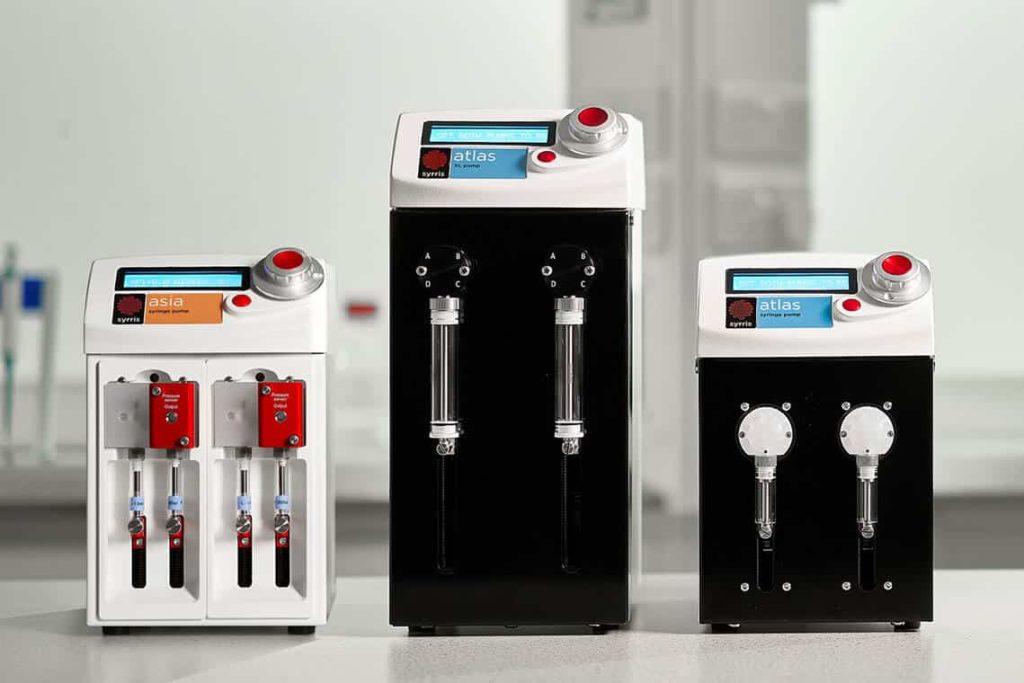Precision laboratory syringe pumps for accurate fluid delivery
Laboratory syringe pumps are indispensable tools for any application requiring the accurate and controlled movement of fluids. Our range of laboratory syringe pumps offers unparalleled precision, reliability, and advanced control features designed to meet the rigorous demands of modern research, clinical, and industrial laboratories. This comprehensive guide details our product line, features, and selection criteria to help you find the perfect lab syringe pump solution.
What are laboratory syringe pumps?
A laboratory syringe pump, is a precise electromechanical device engineered to control the flow and volume of liquid by manipulating the plunger of a syringe. Often referred to as syringe drivers, infusion pumps, fluid dispensers, or dosing systems, they are fundamental for achieving highly repeatable and quantifiable fluid delivery.
Key Components and Function:
The core components include a motor (typically a stepper motor for precise, controlled movements), a syringe holder, and a sophisticated control interface or dedicated software. The motor drives a pusher block against the syringe plunger, enabling either infusion (pushing fluids into a system) or withdrawal (drawing fluids out of a system).
Overview of syringe pump types
There are several different models of syringe pump on the market.
- Single Syringe Pumps: Designed for one fluid path, performing simple infusion or withdrawal.
- Dual Syringe Pumps: Incorporate two independent channels, ideal for mixing two reagents or achieving continuous flow.
- Multi-Syringe Pumps: Offer several channels for simultaneous, complex fluid dispensing tasks.
Applications of laboratory syringe pumps
The precise control offered by syringe pumps is critical across many scientific disciplines.
- Microfluidics: Syringe pumps are the preferred fluid drivers in microfluidics, providing the highly stable, low-pulsation flow essential for generating precise microdroplets, controlling reactions in microchannels, and advancing small-scale research.
- Solution chemistry reactions: Used to manage dosing and reagent addition with high accuracy, ensuring precise molar ratios and reaction control, which is vital for reproducible results.
- Analytical chemistry and chromatography: Syringe pumps are employed in applications requiring exact sample introduction, such as in chromatography or mass spectrometry.
- Drug delivery and infusion: Crucial in clinical settings and research for administering precise and consistent quantities of drugs or solutions over defined periods, minimizing risk and ensuring efficacy.
- Cell culture and perfusion: In biology, they manage the delicate flow rates required for maintaining living cells in perfusion and bioreactor systems, ensuring nutrient and waste management.
- Thin film deposition: Used for techniques like dynamic spin coating, where accurate, repeatable solution dispensing is necessary to control film thickness and uniformity.
- Microdialysis: Essential for the accurate collection and metering of samples in complex in-vivo and in-vitro experiments.
Types of laboratory syringe pumps
Choosing the correct syringe pump type directly impacts your experiment’s success, functionality, and budget.
- Single syringe pumps: Simple, affordable, and ideal for basic infusion tasks involving a single fluid stream.
- Dual syringe pumps: Offer two independent channels. Used for simultaneous two-reagent mixing or linked for continuous flow (where one refills while the other infuses), eliminating flow interruptions. Dual syringe laboratory pumps require no calibration and are especially useful for applications requiring high precision and accuracy at both high and low flow rates.
- Multi-syringe pumps: Provide capacity for 4 or more syringes, enabling high-throughput screening or complex, multi-reagent fluid sequences.
- Infusion pumps (infusion-only): Designed exclusively for pushing fluid out (infusion).
- Infusion pump / withdrawal Pump: Versatile units that support both infusion pumping (delivery) and withdrawal (sampling/aspiration), essential for sample collection, complex dosing profiles, or push-pull techniques.
- Programmable syringe pumps: Feature advanced control logic and software capabilities. These programmable syringe pumps can be automated to execute complex time-based profiles, respond to external sensor inputs (e.g., pH or temperature), and offer enhanced automation.
- Nanoliter pumps: Highly specialized for extremely high-precision work in the nanoliter and sub-microliter range.
- Legacy pumps: Older, robust models often favored in labs where simplicity and basic functionality outweigh the need for modern software interfaces.
What is the difference between a single and dual syringe pump?
A single syringe pump offers one pathway, while a dual syringe pump provides two independent channels for greater control over mixing and enables true continuous flow via alternating operation.
Can syringe pumps infuse and withdraw?
Yes – one of the key advantages of a syringe pump is that it can both infuse and withdraw a volume of liquid. This is especially useful for dual syringe laboratory pumps, as the individual syringes can withdraw liquid from the reservoir whilst the other doses – for a continuous dosing regimen.
Key features and specifications
When selecting a syringe pump, assessing detailed performance metrics is critical to ensure it meets your precision requirements.
- Flow rate control and range: This is the most crucial specification. Our syringe pumps offer wide dynamic flow rate ranges, typically from μL/min up mL/min to allow use across microfluidics and scale-up applications.
- Precision and accuracy: How precise are laboratory syringe pumps? Precision involves:
- Accuracy: How close the dispensed volume is to the target volume.
- Repeatability: The consistency of repeated deliveries.
- Step resolution: Determined by the stepper motor and microstepping technology. Superior accuracy and low pulsatility (or ripple) are key differentiators.
- Atlas Syringe Pump offers a high level of accuracy of .20% coefficient of variation (Cv), and precision of 0.06% (Cv).
- Programmability and software: Programmable syringe pumps support advanced dosing, complex protocols via both the manual interface and software control, and remote operation. Our systems offer multiple interfaces—RS-232/USB/Ethernet, TTL/analog—and support integration via API and protocols like LabVIEW or PLC systems. We offer a range of software automation solutions for Atlas Syringe Pump and for the Asia Syringe Pump for flow chemistry.
- Force and pressure: What is the maximum pressure/force and how does it affect viscous fluids? Higher force/pressure ratings enable the syringe pump to handle higher viscosity fluids or operate against greater backpressure (e.g., in flow reactors or microfluidic systems).
- Syringe compatibility: The syringe pump mechanism must accommodate a wide range of standard syringe sizes for operational flexibility.
- Accessories: Necessary accessories include specialized tubing, valves, check valves, footswitch, and in-line pressure sensors for real-time monitoring and safety.
Choosing the right syringe pump
The syringe itself is critical to your experiment, as it directly contacts the solvent and determines the flow precision and maximum capacity.
Material: What syringe materials/sizes are compatible with my solvents and pump? Choose from glass, plastic, or stainless steel. Glass offers high chemical resistance but is fragile; plastic is economical but less resistant; stainless steel offers pressure resistance but poor visibility. Ensure the plunger and tip (often a Luer Lock connector) are chemically inert with your media.
Syrris Syringe Pumps use PCTFE and glass components for excellent chemical compatibility, allowing you to pump volatile, viscous, and corrosive liquids for a wide range of applications.
Syringe pump size: The size determines the maximum volume control and impacts the accessible flow rate range. Use the largest size possible that still achieves the required minimum flow stability.

Contact us
Contact our specialists for help choosing the best syringe pump for your application.
Ask us:
- The correct syringe diameter
- How to choose the best syringe pump for your chemistry
- About syringe pump automation software
- For user manuals and technical specifications
Syringe pump purchasing and support
-
How much does a laboratory syringe pump cost?
While prices vary by model and configuration (single vs. dual, basic vs. programmable syringe), our detailed cost analysis, including initial purchase price, running costs, and lifespan considerations, helps justify the value of a high-quality syringe pump.
At Syrris, we differentiate by providing detailed performance metrics, including superior accuracy and low pulsatility. Our support includes local UK stock and support, comprehensive warranty, and expert resources for troubleshooting common issues and performing maintenance.
-
How do I use a syringe pump for my particular chemistry application?
- Select an appropriate syringe based on required volume, flow rate, and chemical compatibility.
- Load the syringe into the pump and secure the plunger.
- Set the desired flow rate, volume, and direction using the syringe pump’s interface or software.
Need more help on selecting your syringe pump? Contact Syrris today, our chemistry specialists are here to help.
Laboratory syringe pump terminology
When selecting your syringe pump, you should be aware of the following terms used by manufacturers when describing their products.
-
Laboratory syringe pump key terms
- Flow rate: Volume of fluid delivered per unit of time. Atlas Syringe Pump offers a flow rate of 0.5 μl/min to 20 ml/min standard pump and up to 200 ml/min with Atlas Syringe Pump XL. The Asia Syringe Pump offers a flow rate of 1.0μl to 10ml/min – ideal for continuous flow chemistry
- Force / occlusion pressure – syringe pumps are rated by plunger force/occlusion thresholds. Asia Syringe Pump has a very wide pressure range of Up to 20bar/300psi. A syringe pump should offer pressure monitoring, for example the Asia Syringe Pump has a pressure sensor on each channel to offer real-time pressure monitoring.
- Microfluidics: The study and manipulation of fluids at the microscale.
- Infusion: The process of delivering fluid into a system.
- Withdrawal: The process of drawing fluid into a syringe.
- Stepper motor: A motor that moves in discrete steps, allowing for precise control.
- Laboratory syringe pump: A specialized syringe pump that are used for precise reagent addition, kinetic studies, and reaction optimization where high precision volume or flow rate control is critical for reproducible results. Laboratory syringe pumps often offer automation software and control software for complex dosing regimens.
- Luer lock: A standard connector for syringes and needles.
- Dead volume: Volume of solution that remains in the syringe tubing after dispensing
- Channels: single syringe / dual syringe / multi-channel and continuous-flow strategies (dual syringe + valves) are available.
- Interfaces & control: how a pump is controlled and automated USB/RS-232/485, TTL/Ethernet; software APIs such as LabVIEW or other general interface families are standard in lab control. Syrris Asia and Atlas Syringe Pumps offer control and automation from manual interface on the syringe pump and via Atlas PC Software, Asia Manager PC Software, and OPC UA powered Asia External Control software.
- Pulsation / ripple: the stability of the flow profile. Asia Syringe Pumps offer ultra-low pulsation




